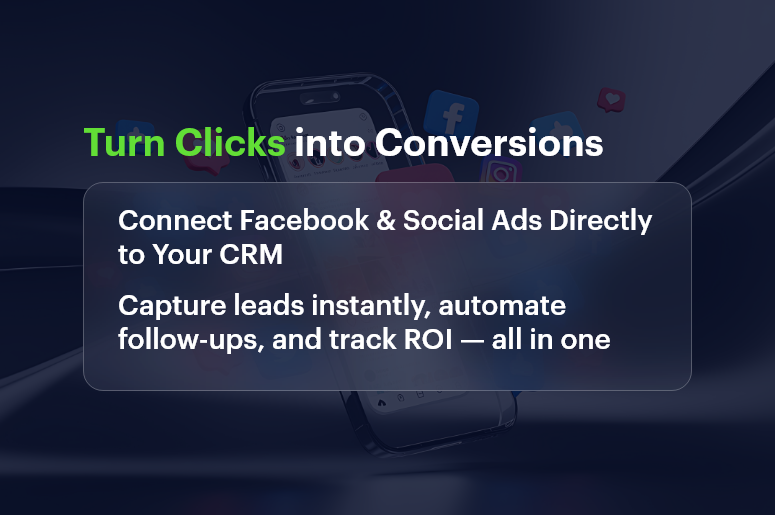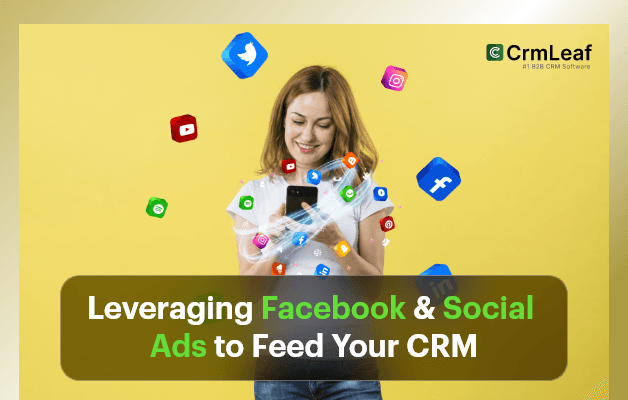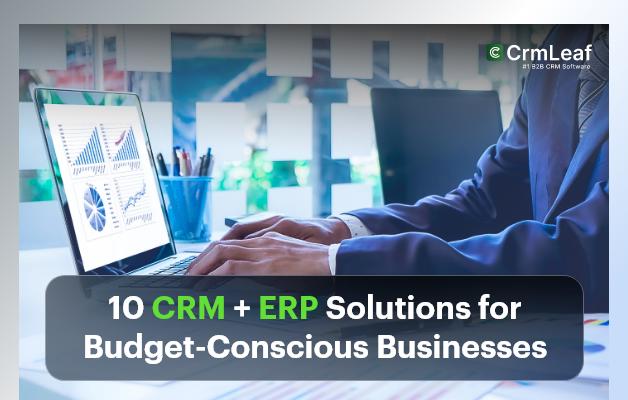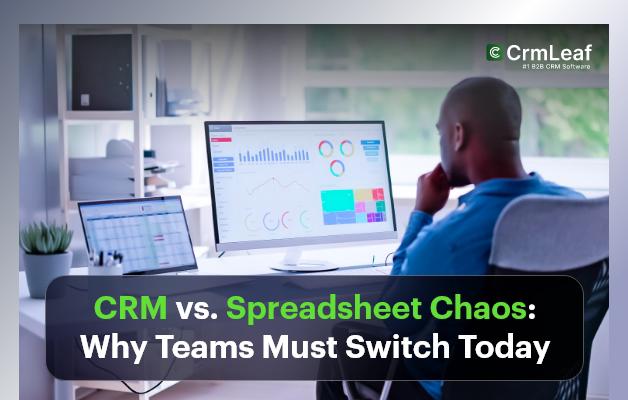Every marketer knows how powerful Facebook and social media ads can be for generating leads. But too often, those leads end up scattered — buried in spreadsheets, inboxes, or ad dashboards. That’s where CRM integration with social ads changes everything.
When your Facebook, Instagram, or LinkedIn ad campaigns connect directly to your CRM, every lead, click, and engagement becomes part of a seamless growth engine. Instead of chasing data across platforms, your team gets real-time visibility, automated workflows, and instant follow-ups — transforming ad spend into measurable revenue.
Why Integrate Facebook & Social Ads with Your CRM?
Let’s face it — running ads is easy. Turning those ad responses into paying customers? That’s where most businesses struggle.
By integrating Facebook and other social ad platforms with your CRM, you can:
- Capture leads automatically — no manual exports or CSV uploads.
- Route leads instantly to the right sales rep or team.
- Trigger automated follow-ups via email, SMS, or WhatsApp.
- Track campaign ROI directly inside your CRM dashboard.
- Build unified customer profiles across marketing and sales touchpoints.
This integration eliminates time lags, reduces leakage, and ensures every potential customer is engaged at the perfect moment.

How Facebook CRM Integration Works
Here’s what happens behind the scenes when you connect Facebook Lead Ads to your CRM (like CrmLeaf):
1. A user fills out a lead form directly within the Facebook or Instagram ad.
2. The CRM instantly captures the data — name, phone, email, campaign source, and other form fields.
3. Automated workflows kick in:
- Assign the lead to a sales rep.
- Send a thank-you email or WhatsApp message.
- Create a follow-up task.
- Add the lead to a nurturing campaign.
4. Analytics dashboards update in real time, showing leads by campaign, conversion rates, and ad performance.
No more lost leads, delayed responses, or guesswork — just streamlined marketing and sales alignment.
Benefits of Feeding Your CRM Through Facebook & Social Ads
1. Real-Time Lead Capture
Your sales team gets leads the moment they’re submitted. No waiting, no manual work. Faster follow-ups mean higher conversions.
2. Improved Lead Quality
You can design high-intent lead forms on Facebook — pre-filled with user info — and map them directly into CRM fields for cleaner, structured data.
3. Automated Nurturing Campaigns
Once leads enter your CRM, you can launch automated email or SMS drip sequences, assign lead scores, and segment audiences by interest or region.
4. Centralized Data
Whether your leads come from Facebook, Instagram, LinkedIn, or Google, all records live in one unified CRM system. You can finally track the full customer journey from ad click to closed deal.
5. Better ROI Tracking
By connecting campaign data with sales outcomes, you can see exactly which ads, audiences, and creatives drive actual revenue — not just impressions.
6. Faster Response Time
Studies show responding to a lead within 5 minutes can increase conversions by up to 400%. Facebook-CRM integration makes that timing effortless.
Connecting Facebook Lead Ads to Your CRM: Step-by-Step
If you’re using CrmLeaf, HubSpot, Zoho, or Salesforce, the process is similar:
- Create or connect your Facebook Business account.
- Set up a Lead Form within your Facebook Ads Manager.
- Map CRM fields (like name, email, phone, source) to your form fields.
- Authorize CRM access to your Facebook Page and ad account.
- Test the connection with a sample lead submission.
- Set up automations — lead assignment, notifications, follow-up emails, or campaigns.
Bonus tip: For maximum efficiency, integrate via Zapier, Make (Integromat), or the native Facebook-CRM API to keep all data synced in real time.
Beyond Facebook: Expanding Social CRM Integration
Your CRM isn’t just a sales tool anymore — it’s the hub of your entire digital ecosystem.
Once Facebook is integrated, extend the same logic to:
- LinkedIn Lead Gen Forms → Capture B2B prospects.
- Instagram Ads → Drive visual-based conversions.
- Google Ads Lead Extensions → Track PPC lead performance.
- Twitter (X) Ads → Engage audiences via interest-based targeting.
Each integration strengthens your CRM as the single source of truth for marketing and sales.
Use Case: How CrmLeaf Turns Ads into Action
Imagine running a Facebook ad campaign for solar panel installation leads.
Without integration:
- You’d download leads manually.
- Import them into Excel or a CRM.
- Notify the sales team manually.
- Lose hours — and leads — in the process.
With CRMLeaf’s Facebook CRM Integration:
- Leads flow into the CRM instantly.
- The system auto-assigns leads based on city or sales rep.
- Follow-up emails or WhatsApp messages go out automatically.
- Managers view campaign-wise lead reports and ROI in one dashboard.
Result: Faster responses, higher conversions, and zero data loss.
Best Practices for Facebook-CRM Lead Management
- Set up lead scoring: Prioritize high-intent leads (e.g., form completion, location match).
- Automate responses: Don’t wait for manual confirmation — use templates for instant outreach.
- Tag campaigns correctly: Use UTM parameters to track which ads drive conversions.
- Monitor ad fatigue: Rotate creatives every 10–14 days to maintain CTR.
- Analyze CRM insights weekly: Identify which campaigns generate actual revenue, not just leads.
- Nurture unconverted leads: Send educational emails or offers via CRM workflows.
The Future: AI-Powered Ad-CRM Intelligence
Modern CRMs like CrmLeaf are already leveraging AI and predictive analytics to make Facebook ad data smarter. With built-in intelligence, you can:
- Predict lead conversion probability.
- Auto-adjust follow-up timing based on engagement.
- Identify the best time and channel to reach each lead.
- Optimize ad spend using CRM-generated performance reports.
The future of Facebook CRM integration is not just automation — it’s intelligent automation.
Conclusion: Turn Social Traffic Into Sales Pipelines
In a world where digital attention is fleeting, connecting your Facebook & social ads directly to your CRM bridges the gap between marketing and sales.
It ensures every click counts — every form submission becomes a conversation, and every conversation moves toward conversion.
Whether you’re a startup or an enterprise, integrating your ads with a platform like CrmLeaf helps you capture, nurture, and close leads — all within one connected ecosystem.
10 FAQs on Facebook CRM Integration
1. What is Facebook CRM integration?
It’s the process of connecting your Facebook Lead Ads with your CRM to capture and manage leads automatically.
2. Which CRMs support Facebook integration?
Popular options include CrmLeaf, HubSpot, Zoho, Salesforce, and Freshsales.
3. Do I need coding knowledge for integration?
No — most CRMs provide built-in connectors or simple third-party integrations (like Zapier).
4. Can I automate follow-ups after integration?
Yes — you can send emails, assign tasks, and schedule calls automatically.
5. What happens if a lead submits data twice?
Most CRMs detect duplicates and merge records automatically.
6. Does Facebook CRM integration work in real time?
Yes — leads sync instantly once the form is submitted.
7. Can I track campaign performance inside my CRM?
Absolutely. You can track leads by source, ad set, and ROI directly.
8. Is my data secure?
Yes — all integrations use encrypted APIs and Facebook’s permissioned data flow.
9. Can I integrate other platforms besides Facebook?
Yes — you can add LinkedIn, Instagram, Google Ads, and more.
10. What’s the main benefit for small businesses?
It eliminates manual lead handling, accelerates response time, and increases conversions.




